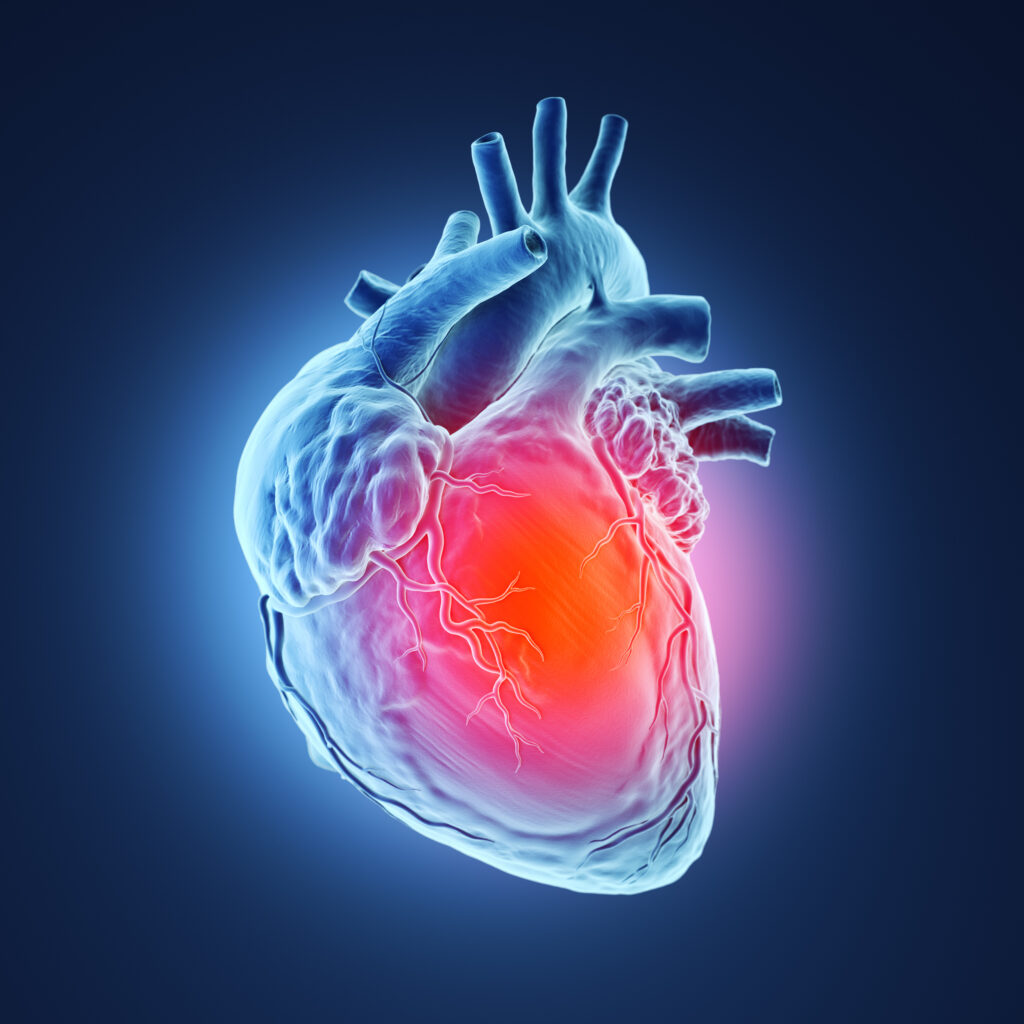Our clinic specializes in
Treating Cardiovascular Disease with Functional Medicine
Cardiovascular disease (CVD) is an umbrella term that includes a variety of diseases that involve the heart and blood vessels.
While there are many different types of CVD, the most common are coronary artery disease, cerebrovascular disease (stroke), peripheral vascular disease, and heart failure/cardiomyopathy. Less common forms include rheumatic and congenital heart disease.
CVD is one of the world’s leading causes of death and disability, but it is largely preventable and can be reversed with a healthy lifestyle.

Cardiovascular disease (CVD) is an umbrella term that includes a variety of diseases that involve the heart and blood vessels.
While there are many different types of CVD, the most common are coronary artery disease, cerebrovascular disease (stroke), peripheral vascular disease, and heart failure/cardiomyopathy. Less common forms include rheumatic and congenital heart disease.
CVD is one of the world’s leading causes of death and disability, but it is largely preventable and can be reversed with a healthy lifestyle.
Coronary Artery Disease (CAD)
The coronary arteries are the arteries that supply the heart muscle with oxygenated blood. In coronary artery disease plaque begins to build up on the walls of these arteries. This is called atherosclerosis. The earliest change that can be detected as one starts to develop CAD is a dysfunction within the endothelial cells, the cells that line the blood vessels. The endothelial cells play many important roles including: production of nitric oxide (which allows for increased blood flow to tissues and prevents platelets from sticking to the blood vessel wall), responding to inflammation within the body, preventing blood clots and plaque formation, and regulating blood pressure. As endothelial dysfunction continues plaques may begin to grow within the arteries. If these plaques become large enough they can impede blood flow to the heart muscle resulting in heart pain with exertion, angina. These plaques can also become inflamed and rupture. When plaques rupture they create a blockage of the coronary artery and absence of blood flow to the heart muscle beyond that area, a heart attack.
We can detect heart disease at the earliest level of endothelial dysfunction using a machine called the EndoPat. We can also monitor for improvement in endothelial function as we restore health to the body and vasculature. Other stages of CAD and plaque progression can also be monitored and improved so as to help prevent heart attacks, strokes, and kidney damage.
Peripheral Vascular Disease
Peripheral vascular disease (PVD) is a condition that results from narrowing, blockage, or spasms of the blood vessels outside of your heart and brain. PVD typically causes pain and fatigue in your lower extremities with exercise/movement. The pain dissipates with rest.
PVD may also affect the vessels that supply oxygen-rich blood to your arms, stomach and intestines, and kidneys.
High Blood Pressure
High blood pressure, also known as hypertension, refers to the condition in which the pressure within the arteries is higher than normal. This pressure, over time, exerts excess force against the walls of the blood vessels causing damage to the endothelial cells. If left uncontrolled or untreated, this condition can lead to multiple health problems, including atherosclerosis, heart failure, loss of vision, stroke, and kidney disease.
Since this disease may not manifest any symptoms, your blood pressure could be dangerously high for years without you even knowing it.
High Cholesterol
Cholesterol is a waxy, oil-based substance found in the blood. Cholesterol serves many important functions within the body but having too much cholesterol can increase your chance of developing heart disease. These fatty deposits can become deposited in your blood vessels in the forms of plaques and eventually block the flow of blood through your arteries to your heart. In this way high cholesterol could ultimately lead to a heart attack or stroke. We have learned much about cholesterol (beyond just the amounts of good and bad cholesterol) and how certain types and sizes of cholesterol particles can be more dangerous. You can have these risks assessed with an advanced lipid profile.
Metabolic Syndrome
Metabolic syndrome refers to a cluster of disorders: high levels of blood pressure, elevated blood sugar levels, retention of weight around the waist, and abnormal cholesterol or triglyceride levels. These all increase the chances of developing cardiovascular diseases, stroke, and diabetes.
Aggressive changes in lifestyle and diet can help reverse heart disease, high blood pressure, high cholesterol and diabetes.


